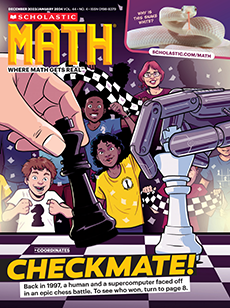Scholastic: What is your nonprofit business and why did you start it?
Jahkil: It all started when I was 5 years old. My cousins and I went to feed chili to people experiencing homelessness, and I saw that they were sleeping on the ground. Before that, I thought everybody had homes. Afterward, I kept asking my parents if there was something that we could do. Eventually, we started thinking about things we use on a daily basis that they don’t have. That’s when we came up with blessing bags: We could hand out packages of items like hand sanitizer and socks that we thought of as blessings. It blossomed from there into this big organization.
Scholastic: What’s the best part of running your nonprofit?
Jahkil: The best part—besides getting to boss my parents around—is the impact I have on young people. One of my biggest goals is to inspire others to give back to their communities. I teach a social entrepreneurship class. I also do virtual and in-person events for schools. It’s great when a kid comes up to me afterwards and I know I got through to them.
Scholastic: What is your nonprofit business and why did you start it?
Jahkil: It all started when I was 5 years old. My cousins and I went to feed chili to people experiencing homelessness, and I saw that they were sleeping on the ground. Before that, I thought everybody had homes. Afterward, I kept asking my parents if there was something that we could do. Eventually, we started thinking about things we use on a daily basis that they don’t have. That’s when we came up with blessing bags: We could hand out packages of items like hand sanitizer and socks that we thought of as blessings. It blossomed from there into this big organization.
Scholastic: What’s the best part of running your nonprofit?
Jahkil: The best part—besides getting to boss my parents around—is the impact I have on young people. One of my biggest goals is to inspire others to give back to their communities. I teach a social entrepreneurship class. I also do virtual and in-person events for schools. It’s great when a kid comes up to me afterwards and I know I got through to them.
